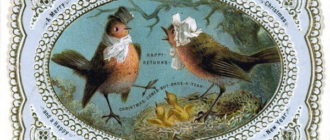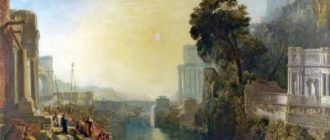
Bubbles was painted by Jean Baptiste Siméon Chardin around 1734. The French artist, who lived from 1699 to 1779, is famous today for showing the structure of reality in scenes from everyday life. Jean Simeon Chardin was an 18th century still life and genre painter from Paris. Chardin liked to favor realism and everyday scenes of a genre style that contrasted strongly with the Rococo movement of the time. It can be assumed that the birth of his daughter inspired the artist to write this painting. The related works of this period are “Girl with a shuttlecock” and “House of Cards”.
Chardin’s main subject was “la vie silncieuse” (“quiet life”) modest everyday scenes and vignettes. He loved to paint scenes from family life, home interiors, still lifes and portraits. Colleagues admired Chardin not only for his special approach to painting, but also for his ability to master the tones of paint to evoke light and tranquility.

Basic data of the picture
The most important descriptive parameters of the painting “Bubbles” include the following:
Author: Jean-Simeon Chardin (1699-1779);
Creation: 1733-1734;
Size: 746 x 930 cm;
Technique: Oil painting;
Material: Canvas;
Style: Realism; Genre:
Household genre;
Location: National Gallery of Art, Washington.
The plot of the painting “Soap Bubbles”
Bubbles was the first of many paintings by Jean Simeon Chardin to depict ordinary life and childlike spontaneity. In this picture, everyday life is harmoniously combined with youth and innocence. In accordance with the theme of the picture, the heroes are dressed quite simply, in casual costumes without jewelry.
This composition, the boy, standing in the window and leaning on the windowsill, is trying to inflate a soap bubble. And he’s good at it! The bubble is already pretty big. To the left of the main character, we see the head of another boy in a hat, who is watching the whole process. We, the audience, just want to squint, anticipating a quick splash of soapy water. The main character and the funny boy next to him are completely absorbed in this activity.
The sitter is the son of Jean-Jacques Le Noir, one of Chardin’s closest friends. The boy’s age is unknown, but it is noticeable that this is a teenage period. The boy belongs to a French family trading in Paris. The youth and ease of the characters remind the viewer of the pleasure of being young and not forgetting to dream and return to childhood before we all move into adulthood.

Did you know that in the 17th and 18th centuries, bubbles were more than just a fun game?
By the way, for the viewer of the 18th century, bubbles were not only entertainment, but also attributes of deep messages. Some art historians believe that a number of Chardin’s paintings (including Bubbles) carry vanitas symbolism. Bubbles during this period were associated with the transience of life, the transient nature of life.
It is possible that Chardin wanted to reflect the connection between moment and constancy, in order to show that the transience of life does not contradict its meaning. The bubble blowing theme was especially popular in 17th century Dutch prints that were widespread in France. Chardin managed to create at least three, and possibly four versions with a similar plot.
Painting technique
Chardin’s works, including the work we are analyzing, are based on a warm palette (brown, beige, green). Moderation of brown and earthy colors gives the picture solidity and weight. The strokes are thick and soft. It is these shades and the technique of painting with oil paints that create a feeling of coziness, comfort, quiet and calm joy in the picture, which Jean-Simeon Chardin sought with his family scenes.
Chardin creates the illusion of a fleeting moment: a bubble is inflated and is about to burst. It will disappear in a second. But, despite the unexpectedness of the moment, the artist carefully constructed his composition. The boys are framed by a stone window, the sharp rectangles of which are softened by the boy’s rounded body. His arms and head form a triangle. The triangular shape is repeated in the younger boy’s hat. On the shoulder of the older boy, we see a hole from which part of the lower material came out. The faces and eyes of the heroes are illuminated with a bright light.
But we do not see the look of the characters in Chardin’s work (they are completely focused on their activities). In the center of attention of the composition is a round translucent bubble that glistens against the background of warm brown tones of the canvas. Thus, in the painting by Chardin “Soap Bubbles” we see simple young heroes doing routine business without worries in a world of turmoil.
The picture shows us that regardless of status
All people are valuable in themselves, free and should be able to relax and enjoy life. What we see in the picture how the bubble is about to burst lasts a few seconds, but Chardin shows that at this moment the eternal structure of the world is concluded and therefore this moment lasted for more than 285 years!






